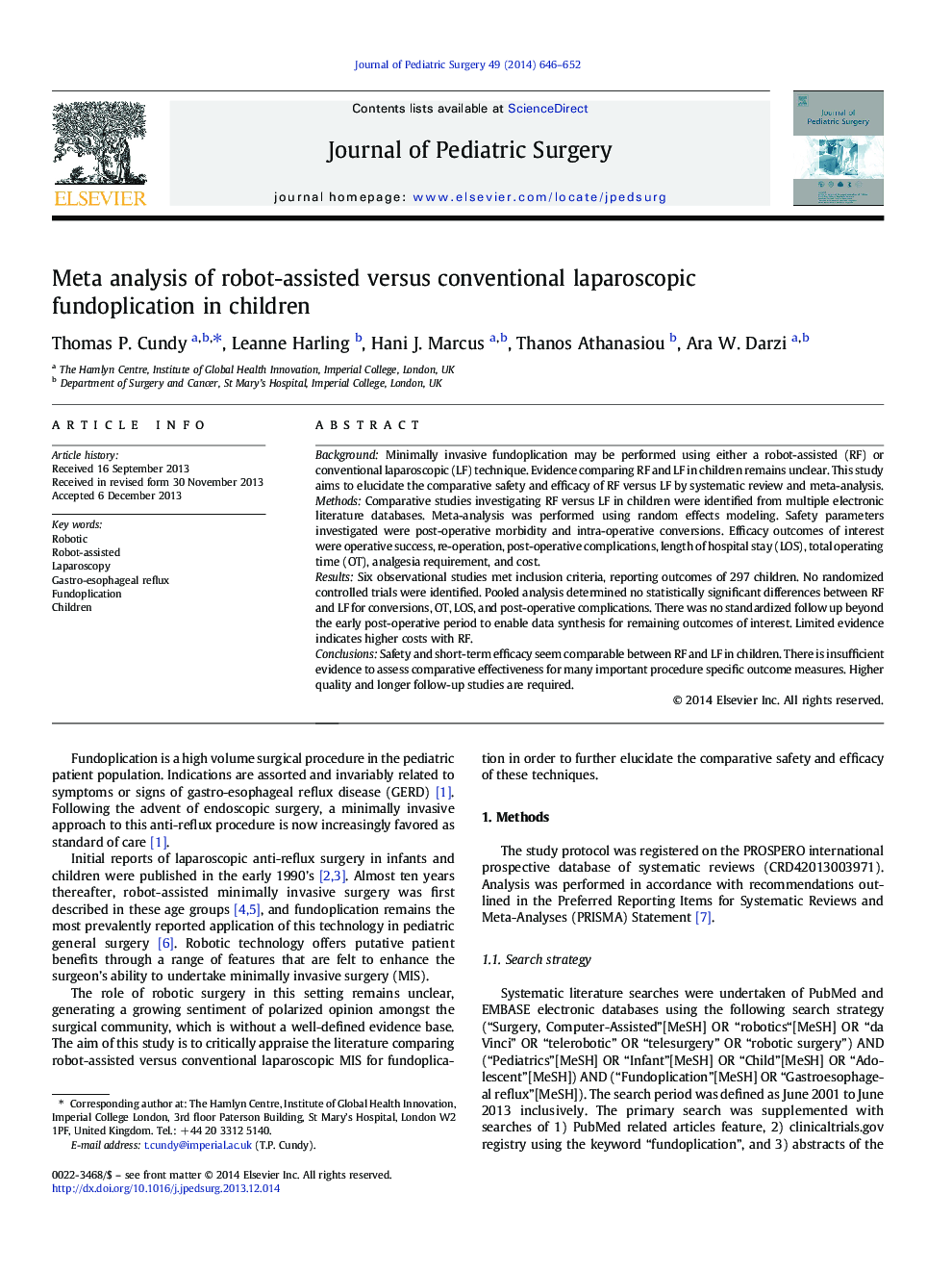| Article ID | Journal | Published Year | Pages | File Type |
|---|---|---|---|---|
| 4155327 | Journal of Pediatric Surgery | 2014 | 7 Pages |
BackgroundMinimally invasive fundoplication may be performed using either a robot-assisted (RF) or conventional laparoscopic (LF) technique. Evidence comparing RF and LF in children remains unclear. This study aims to elucidate the comparative safety and efficacy of RF versus LF by systematic review and meta-analysis.MethodsComparative studies investigating RF versus LF in children were identified from multiple electronic literature databases. Meta-analysis was performed using random effects modeling. Safety parameters investigated were post-operative morbidity and intra-operative conversions. Efficacy outcomes of interest were operative success, re-operation, post-operative complications, length of hospital stay (LOS), total operating time (OT), analgesia requirement, and cost.ResultsSix observational studies met inclusion criteria, reporting outcomes of 297 children. No randomized controlled trials were identified. Pooled analysis determined no statistically significant differences between RF and LF for conversions, OT, LOS, and post-operative complications. There was no standardized follow up beyond the early post-operative period to enable data synthesis for remaining outcomes of interest. Limited evidence indicates higher costs with RF.ConclusionsSafety and short-term efficacy seem comparable between RF and LF in children. There is insufficient evidence to assess comparative effectiveness for many important procedure specific outcome measures. Higher quality and longer follow-up studies are required.
